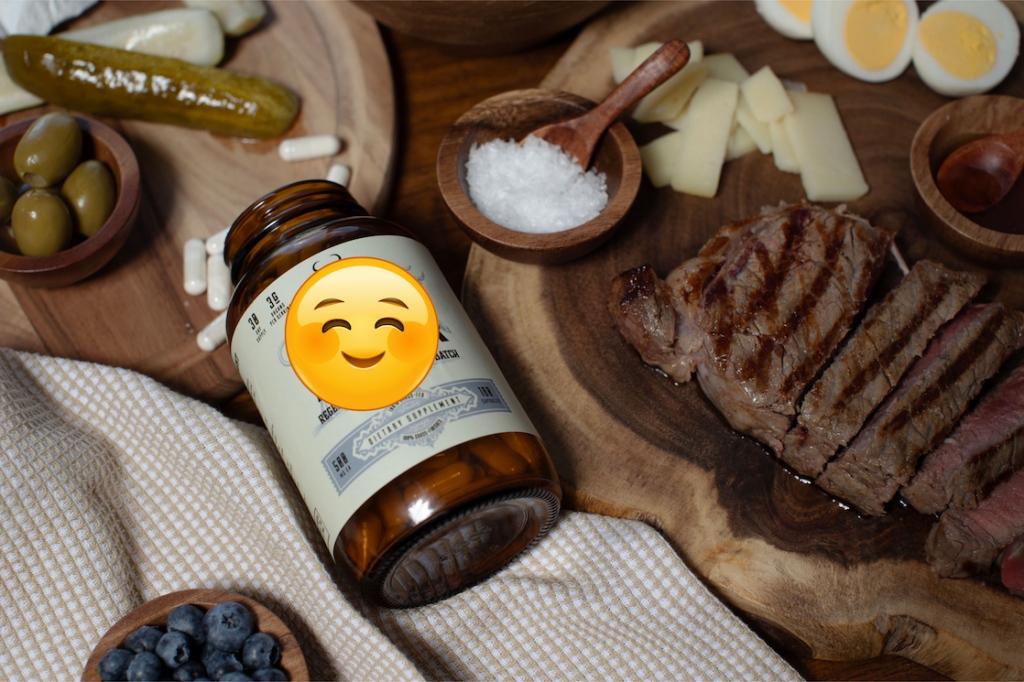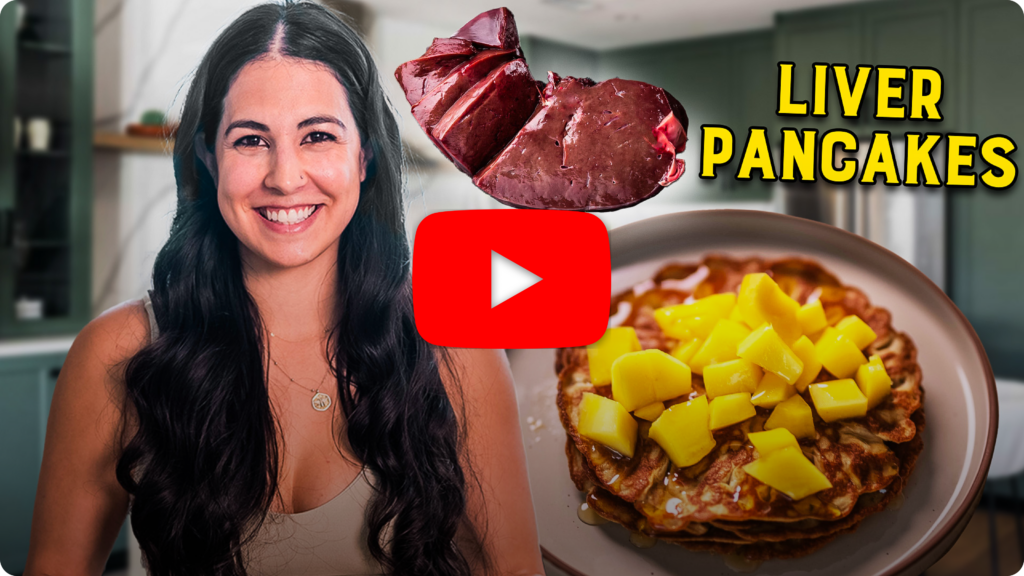Hey Radical Health Seekers 👋🏼
Before we dive into our topic of the week, we’re pumped to tell you about a very special new product we’re launching very soon 🥳

This new product is loaded with some very special nutrients, one of which has even been called the “fourth macronutrient”…
And promotes cartilage regeneration, shock absorption, soft tissue lubrication, and compressive load resistance 💪🏼
If you are noticing joint pain or stiffness…
Or want to future-proof your joints so you can continue doing what you love into old age…
Then be sure to join the Waitlist where we’ll give you Free Shipping once it’s launched 📦
Now… on with the show!
Organs… nutritious AND delicious??

If you’ve ever seen Anthony Bourdain in the TV show Parts Unknown, you might recall him eating such culinary delights as blood soup in Thailand, seal eyeballs in Canada, and roasted ram testicles in Morocco.
And like millions of Americans, you probably thought “how can they possibly eat that?”
But it’s all relative.
Because unlike modern American cuisine, organs still remain a key part of many cuisines worldwide (including the Blue Zone regions we talked about last week)…
And up until a few generations ago, they were also a key part of our diets.
Because on American family farms and homesteads, it was common to slaughter many of the animals in the fall…
This was done to keep enough grass and hay through winter for the best animals which would go on to breed.
And since the organs are the first to spoil, our great-great grandparents needed ways to preserve or eat them quickly.

They certainly weren’t throwing them in the garbage, when every precious calorie was needed…
And nutritionally speaking, nothing was better to keep them and their families strong and healthy for the winter ahead.
Because without modern medicine or antibiotics, the nutrients in organs could have meant the difference between life and death.
But by the 1950’s, cheap calories and highly processed, hyper-palatable foods had come on the scene to push these superfoods off the dinner plate.
Because why eat liver and tripe when you can eat a Snickers bar or sliced bread?
We abandoned the highest form of nutrition for the lowest form…
And nowadays we think we can replace the nutrients from organs with synthetic vitamins and fortified foods.
But it hasn’t worked.
Because most people now have significant micronutrient inadequacies and suffer from a wide range of health issues as a result.
So this week, we’re taking a leaf out of Anthony Bourdain’s book and showing you that eating organs is normal for most of the world.
A guide to organ dishes in your favorite cuisines
🇫🇷 French cuisine:

French cuisine is famous for foie gras, a delicacy made from goose liver…
But visit France or an authentic French restaurant in the States, and you will also see organ dishes like cervelle (de veau) au beurre noir (calf brains in black butter)…
Rognons à la moutarde (kidneys in cream & mustard sauce)…
And tripes a la mode de Caen, which is cows intestines bathed in apple brandy.
🇲🇽 Mexican cuisine:
Mexican cuisine doesn’t shy away from nose-to-tail dining either, with just about every part of the animal appearing as a taco filling at some point.
There is taco de lengua (tongue), taco de tripas (tripe), taco de sesos (brain), and even taco de ojos (eyeballs).
And let’s not forget Menudo, the famous Mexican soup made with a cow’s stomach:

🇩🇪 German cuisine:

German cuisine loves to use liver, adding it to dumplings (leberklosse), and sausages (liverwurst).
But they don’t stop there, making sausages with spleen (milzwurst) and blood (blutwurst) too.
In Bavaria, they have a dish called sour lung soup (saure Lüngerl).
It’s not actually a soup though…
Instead, finely sliced lung, heart, thymus, and pancreas are smothered in a sauce made of vinegar, sour cream, and parsley, with bread dumplings (which let’s face it, probably contain liver too).
🇮🇹 Italian cuisine:

The Italian city of Venice is famous for its canals, but it’s also known for a famous dish called Fegato alla veneziana, aka liver and onions.
Or travel south to Sicily, and street food vendors might serve you up Pani câ meusa, which is a traditional spleen, lung and cheese sandwich.
And in Rome you will find a traditional dish called pagliata, which is a pasta sauce made from the intestine of an unweaned calf…
Because the calf has only ever drank its mother’s milk (no grass), the dish is said to be a super creamy, colostrum-rich sauce that supposedly tastes a little like cheese. Wild!
🇨🇳 Chinese cuisine
Traditional Chinese cuisine is another wonderland of nose-to-tail dining…
One dish, the poetically named “Dragon in the Flame of Desire” is an entire yak penis, which is steamed, fried, and flambéed up on a massive platter (presumably to accommodate the 20-inch organ)…

And you’ll also find more “boring” dishes such as pigs’ organ soup, dim sum with coagulated duck blood, and stir-fries rich in kidneys, liver, and intestines on the menu.
Organs aren’t always tasty, but they are always nutritious…
It’s clear that throughout history and across the world, organs have been, and continue to be, a valuable source of nutrition for humans…
Because whether it’s China, Germany, Poland or Peru, every national cuisine cooks with them.
Try this easy and tasty liver recipe:
“But what if I don’t like the taste of organs?”
Well, there is still one HUGE reason to get them in your diet, and that is for their nutrition.
Because organs are superfoods.
They are jam-packed with vitamins and minerals not found in meaningful amounts in other foods…
And they top up our nutrient tanks so we can enjoy radical health.
And this is what we offer at Heart & Soil… we make it super easy for you to enjoy the highest form of nutrition that exists, in a clean, taste-free capsule.
Because we understand you may not want to eat liver, kidneys, or a 20-inch yak penis.
That’s all from us this week!
The Heart & Soil Team
Subscribe to future articles like this:
